List of Fake Shopping Websites & How To Avoid These Scams
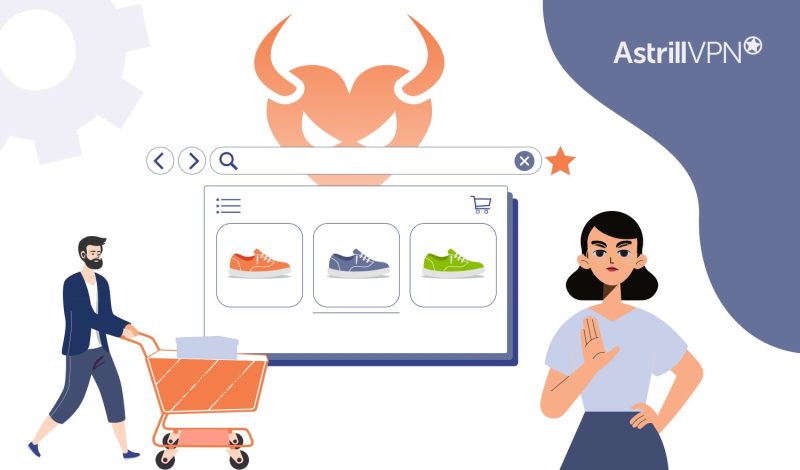
When Black Friday or Cyber Monday comes around, two of the biggest shopping days of the year, people flock to the stores, eager to get their hands on different items and products since retailers offer the best discounts and deals. However, during the hustle and bustle of buying these goods and jumping online to look for the next best sale, it’s very easy to fall victim to a shopping website thinking it’s legitimate.
Fake shopping websites look exactly like real websites and are created to commit fraud. The fake shopping websites set low prices for popular items, and sometimes, the discount genuinely feels too good to be true. They will never be delivered to you when you place an order. Scammers also use these fake shopping websites to steal credit card information and confidential data.
In this guide, we’ve made a list of fake shopping websites that you must avoid at all costs, especially when shopping during the popular seasons. We’ll also discuss how you can detect a phony shopping website and how to prevent getting scammed when shopping online. So, if you’re ready, let’s get started!
Table of Contents
ToggleWhat Are Scam Websites & How Do They Work?
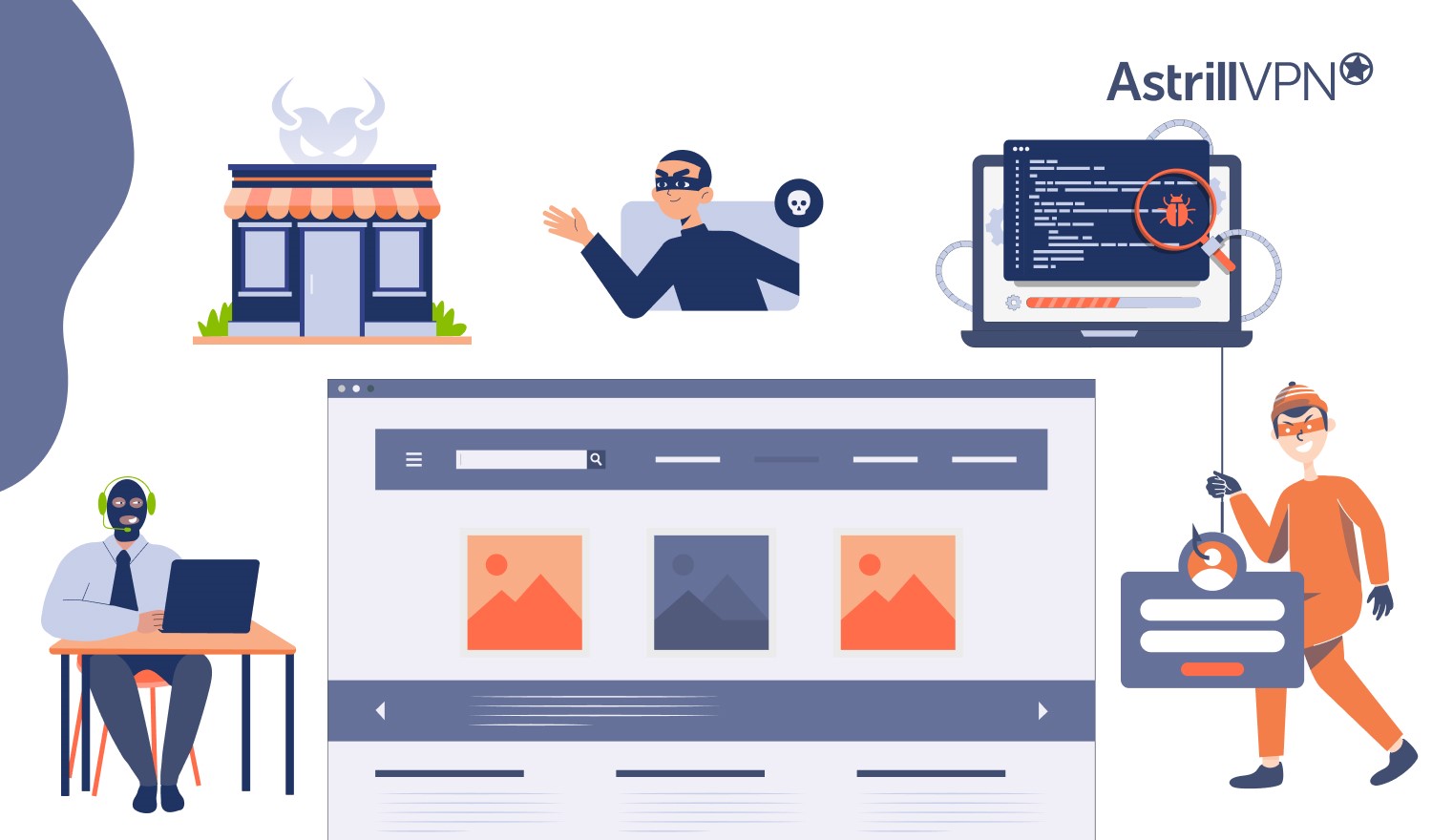
Scam websites are fraudulent online platforms created with the sole aim of deceiving users. These websites trick people into providing sensitive information like their personal data, login credentials, and financial information, all for malicious purposes.
Scam websites can take different forms, from fake online stores to fraudulent services and phishing sites. Scammers use the internet’s anonymity to mask their true identity and intentions, all behind different disguises. So, how do scam websites work? Let’s find out:
- Impersonation: Scam websites mimic legitimate ones by copying reputable sites’ design, layout, and content to appear legitimate. This also includes using similar domain names, page structures, and logos.
- Phishing: Many scam websites use phishing and social engineering techniques to trick users into divulging sensitive and confidential information. They can send emails and messages pretending to be from a legitimate source and then ask users to click on a link and enter their data.
- Fake Online Stores: Some scam websites pretend to be legitimate online stores that offer products at unbelievably low prices. Users who purchase these products may never receive them, or the products they get are poor quality.
- Tech Support Scams: Scammers can create websites that display fake error messages and pop-ups and urge users to call a phone number for technical support. Once users get in contact with them, the scammers can aim to gain remote access to their computers or charge them for unnecessary services.
- Malware Distribution: Scam websites often host malicious software or malware. Visitors can unknowingly download malware on their devices, which leads to various security issues, including identity theft, financial fraud, and unauthorized access to personal data.
Are Fake Shopping Websites Dangerous?
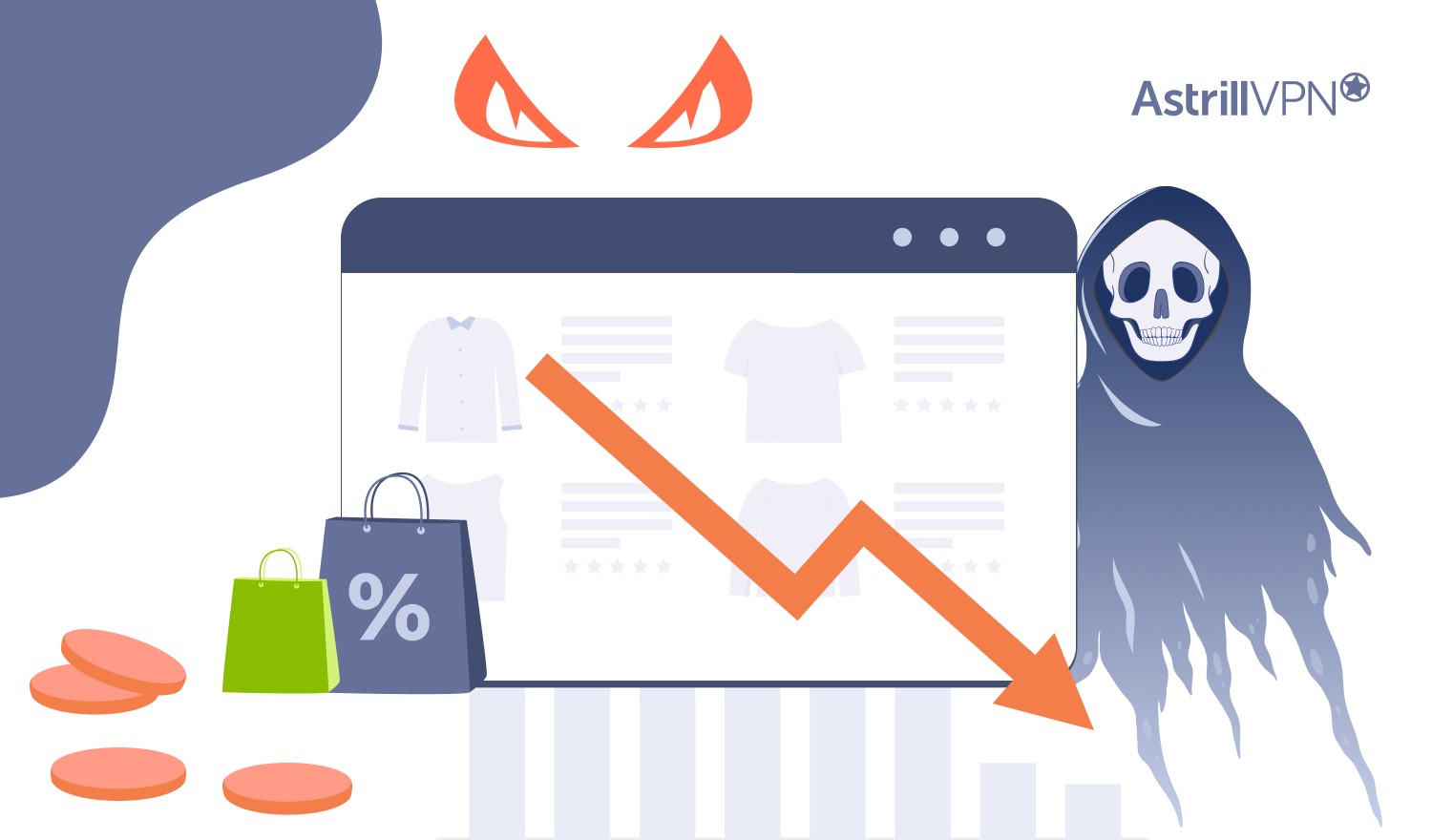
Yes, fake shopping websites can be dangerous as they pose many risks, including financial loss, identity theft, credit card fraud, phishing attacks, and malware distribution. Scam websites exploit you by using social engineering techniques. They manipulate the victim into believing that the website is legitimate and coerce them into providing confidential and sensitive information. However, always be on the lookout, as fake websites aren’t hard to detect once you know what you’re looking for.
Scammers often use emotional manipulation to trick users into getting what they want. Once they’ve emotionally manipulated you, any skepticism you may have heard regarding the website gets thrown out the window.
One of the most common feelings they attempt to create in people visiting their website to trick them includes a feeling of urgency by putting time-sensitive offers on their website and creating excitement through discounts and deals. All of these feelings are created with the intention of the attacker to get what they want.
How Can I Tell If A Shopping Website Is Fake?
To avoid getting scammed by dodgy deals, here are the top signs that the shopping website that you’ve encountered is fake:
1) The Domain Name Doesn’t Make Sense
Check to see if the domain name is legitimate whenever you encounter a shopping website or if it varies slightly from what you expect. Another aspect you must look into to determine the website’s legitimacy is the domain name’s history. If the domain name has been registered for a short period, with the registration date being closer to holidays and big holidays, then it’s a telltale sign that the website is fake.
There are plenty of free online tools that can help you determine the age of the website. These tools include Google’s Transparency Report, which lets you check whether a site is trustworthy. These tools will help you determine the website’s legitimacy before you purchase a product and lose your money in the process.
2) Typos & Bad Grammar
Companies with an established business have a team of editors and content writers who proofread and edit the website’s copy before publishing it. Online scammers don’t have the time or the skill to write creative and compelling website copy, and even if they copy the content from somewhere, there are still bound to be spelling and grammatical errors.
3) Bad Website Design
Fake shopping websites often have poorly designed or amateur layouts. When detecting a fake website, make sure to be on the lookout for inconsistent fonts and low-quality images. A legitimate business will always invest in website design as the website design, if done well, will want the customer to stay on the website for longer.
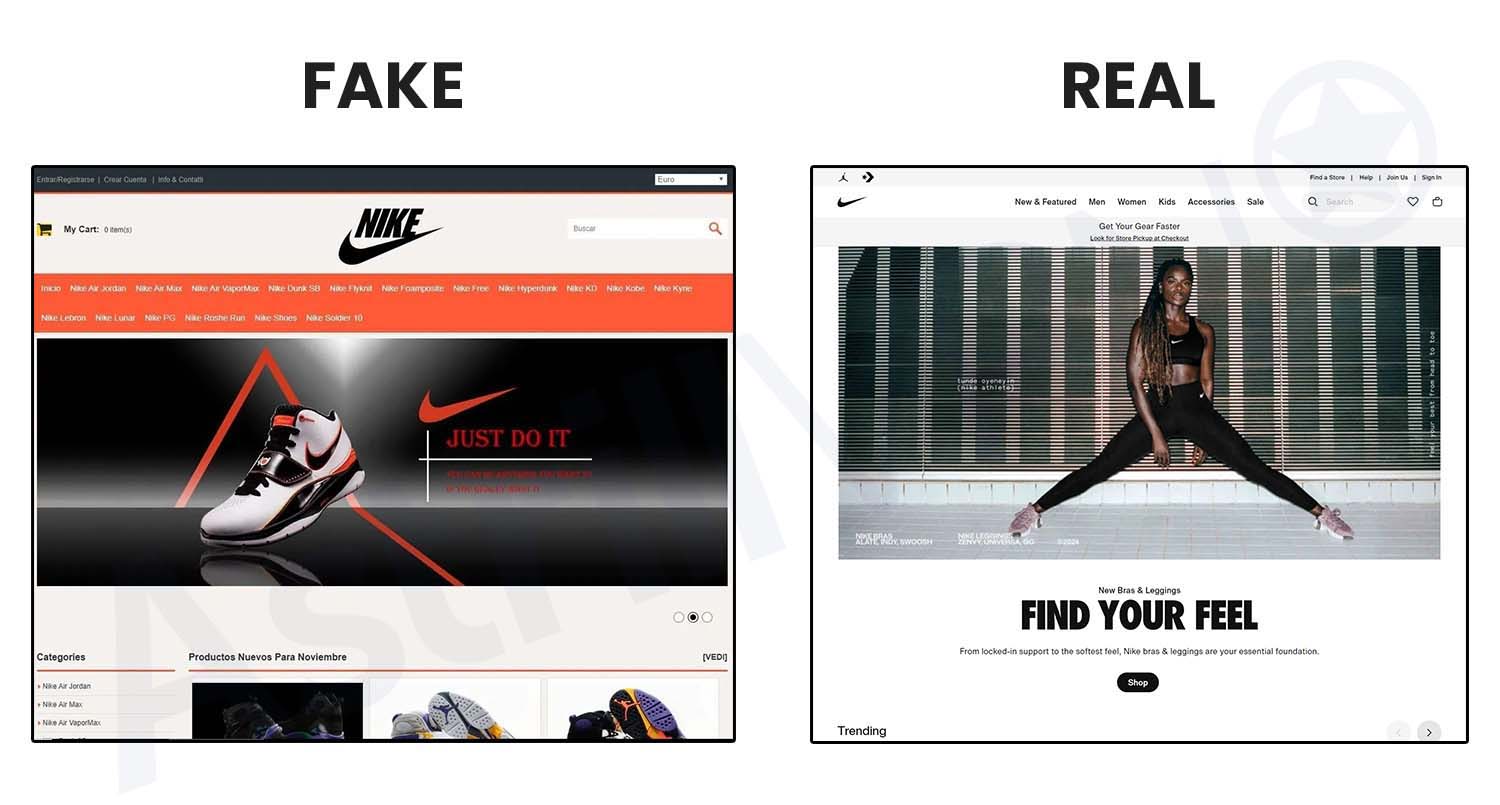
4) Limited Contact Information
There is a lack of clear and accessible contact information, including a phone number, email address, or the company’s location. This is a huge red flag if you can’t find any of these on the website. A legitimate online retailer will offer multiple ways to contact the company, and all communication modes will be mentioned on the website.
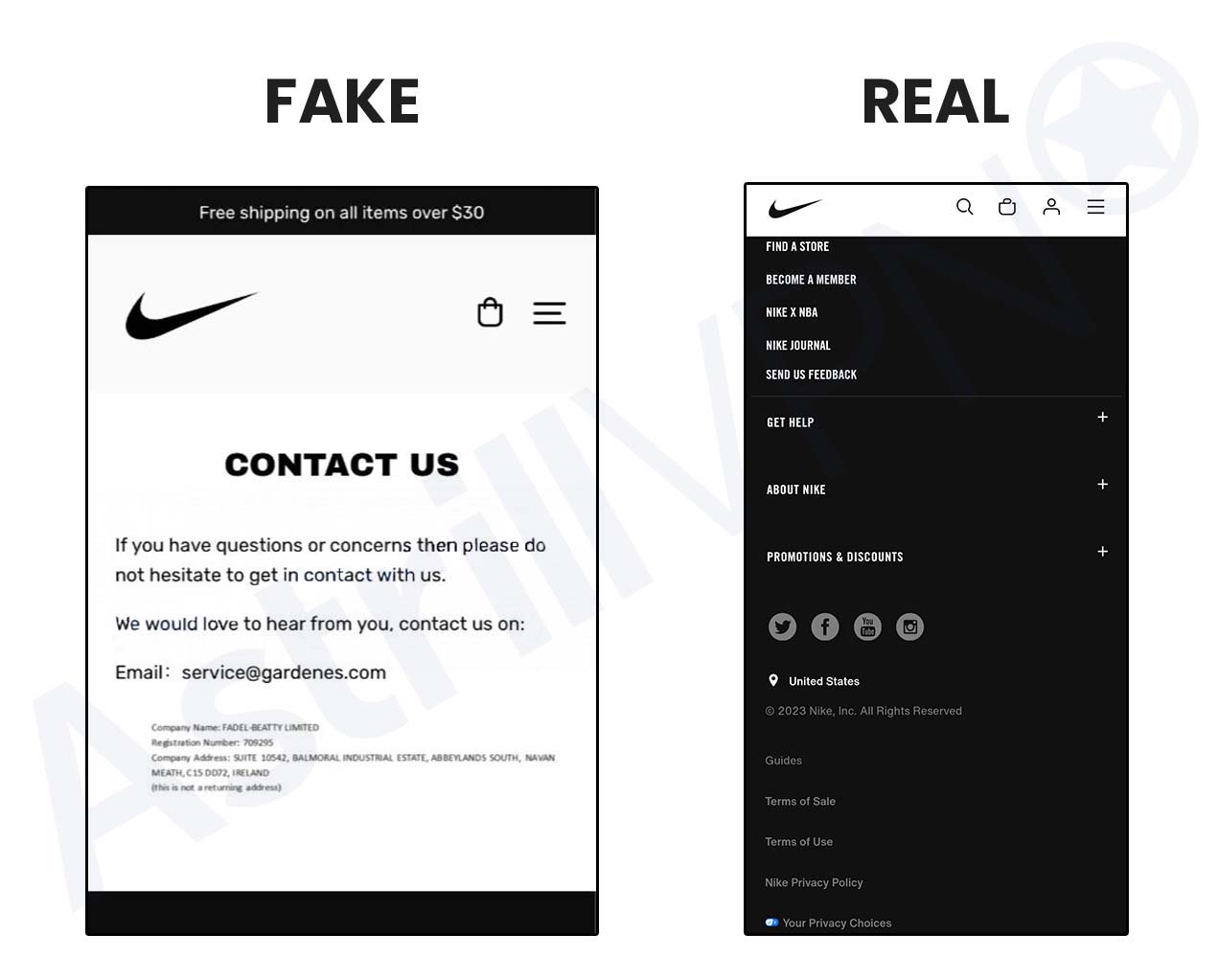
5) No SSL Encryption
Ensure that the website has HTTPS encryption. Check for “https://” in the website’s URL, indicating a secure connection. Scam websites don’t have SSL encryption, which can leave your sensitive and confidential information vulnerable to getting intercepted.
6) No Reviews Or Testimonials
Another major red flag that indicates a scam website is if there aren’t any customer reviews or testimonials mentioned on the website. If you can’t find any reviews, or the ones you find are overly positive with no room for criticism, then it’s a good sign that the website is fake.
7) Sketchy Payment Options
Legitimate online stores will offer various payment options, including credit/debit cards, cash on delivery, or pay later options. Conversely, a scammer will coerce you to pay for the products through untraceable or non-reversible payment methods like PayPal, Venmo, WireTransfer, Cryptocurrencies, and Cash App.
8) No Return Policy Or Guarantee
Reputable and established companies are always transparent about their return and refund policies since they know they must comply with consumer protection laws. Scam websites, on the other hand, don’t mention any return policies on the website or even feel the need to care much about it. Legitimate websites also have clearly written privacy policies and terms of service. If these are poorly written or missing altogether, then it’s fake.
9) Website Offers Bargain Basement Prices
Another big giveaway that the shopping website is fake is that it is offering bargain basement prices for its products and services. If you’re going through the website and realize that the prices of their products are significantly lower than what you’ve seen on other websites, then that may be a sign that you need to proceed with caution before purchasing anything from this website. If the site offers discounts at 50% or above, you should do your due diligence and make sure it’s legitimate before purchasing anything.
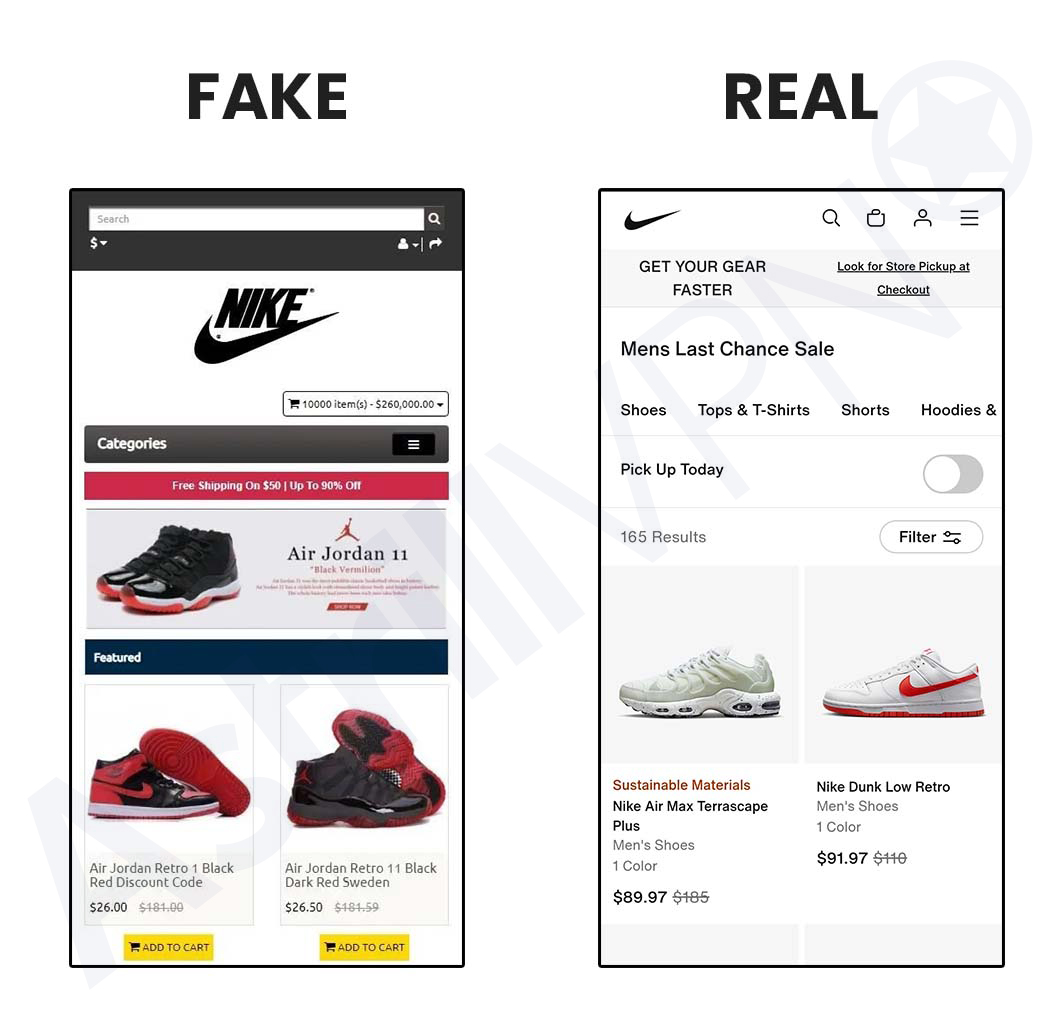
List Of Fake Shopping Websites That You Need To Be Vary Of
Now that you know the dangers of fake shopping websites and the damage they can cause, we’ve compiled a list of scamming websites that you need to be cautious of before you think of purchasing anything from them.
1) Pilosaleltd.com or piloltd.com
This is a clear-cut scam site. If you go to the reviews on Trustpilot, Trustpilot says it’s an unclaimed profile, and one review from a user says that it’s a scam company selling products under different names. Other customer reviews state that the products they received were nothing like what was shown on their website. Many customers have complained that these sites have unresponsive or nonexistent customer service. They have a limited social media presence, which clearly indicates that the websites are scams.
2) Omitages.com
One of the major red flags of this website is that it is newly registered, only having been established in September 2022. On Trustpilot, the website has a low rating, with customers complaining about never receiving their products, being unable to get refunds, and counterfeit products. Although the website does seem to sell goods, because it has bad customer reviews, we can safely assume it is a scam website.
Another giveaway that it is a fake website is that it has bad grammar and spelling mistakes in its copy and that there’s a lack of contact information mentioned on the website. The only way you can contact the company is through an online form. Legitimate companies have multiple modes of communication through which you can contact them.
3) TiffanyCoShop.com
One of the most significant signs that this website is a scam is that it sells Tiffany products at meager prices, which is alarming since Tiffany and Co. is a high-end luxury brand. Any website offering Tiffany merchandise at low prices is highly likely a scam. Another warning sign is that this domain was registered in April 2023, and the registrar is Name Cheap. This suggests that the website is relatively new, and Name Cheap is a popular domain registrar that scammers sometimes use.
4) MyFaceBoxer.com
Although this website has some positive reviews, generally, the site has low ratings and traffic. If the website has low traffic, it doesn’t necessarily mean that it is fake, but hiding the identity of the people behind this company is a sign of a scam.
Another major thing that gives it away is that while the reviews on Trustpilot aren’t all bad, they seem automated and repetitive, which can indicate a bot. The negative reviews mention how the items never got delivered. It has also been flagged as a possible fraud on Scamadviser, raising questions about its legitimacy.
5) Emmarelief.com
Although the website looks legit from its layout and design, it still raises some red flags regarding its legitimacy. It has bad customer reviews on Trustpilot, stating poor customer service and lengthy shipment times. It also has a low Scamadviser score, which raises alarm bells.
Although their Emma supplement promises good digestive health, the customers who received the products said they had severe stomach issues when taking the supplements. These all point toward the fact that the company is a scam.
6) Morrity.com
Though it doesn’t have a low rating compared to these fake websites, you should still exercise caution when using this website. Although it claims to be a part of a wall art niche, it has a high Malware score because of its suspicious code indicators. It claims to sell various products at meager prices but will send you counterfeit products or nothing at all. It has zero contact information or social media presence, and its Terms of Service and Privacy Policy look like they’ve been copied from other scam websites.
7) Stanley1915.com
On Trustpilot, it has a trust score of 1%, indicating that this site cannot be trusted. Another warning sign is that the domain was created in May 2023, so it’s not enough time to have had “500,000 Happy Customers,” as the website claims, since building a business takes time. Their discounts are too good to be true, proving it’s a scam.
8) Brooks-outlet.com
This is a well-known scam website with a bad rating on Trustpilot and terrible customer reviews. A few customers said they received a low-quality necklace instead of the shoes they ordered, which is a common tactic used by scammers to prove that they at least delivered something. Their deals are too good to be true, and this is surprising because Brooks shoes are always expensive. They also have limited contact information on their website, all pointing toward the fact that it is a scam website, so proceed cautiously.
9) Allureusports.com
The website has the standard red flags known to be true for all scam websites. It is a copycat website of DICK’s sporting goods, which is an American sportswear retail chain. At first glance, you may not be able to distinguish it from the actual website, but upon further inspection, you can note the red flags.
The Allure sports scam has spread through Facebook Ads to promote tempting deals for Hoka sneakers. You can tell this is a scam as they have excellent discounts, which feel too good to be true, lack any customer reviews, have a really low score on Scamadviser, and also, the website is young. The domain was registered on July 28th, 2023, which wasn’t that long ago.
How To Prevent Getting Scammed When Shopping Online
Scammers are always one step ahead when figuring out the most creative ways to con users out of their money through these fake shopping websites; unfortunately, many fall for it. However, you can avoid getting scammed by implementing some of these preventative measures. Here are some of the most effective ways to do it:
1) Look For The HTTPS Icon
An HTTPS website is a padlock icon, which you’ll find next to the URL. Before you even begin online shopping, make sure that the website is HTTPS encrypted. If the website is HTTPS encrypted, hackers cannot intercept your personal and confidential data since it is encrypted and protected against malicious actors.
2) Do Your Research
If you’ve stumbled upon a website with deals that are too good to be true, and you can’t believe how low the prices are, pause and check whether the company and website are legitimate. Do your research and look for customer reviews regarding what people say about the company and its products.
Another thing you can do before purchasing online is to add the word “scam” or “complaint” in the Google search engine next to the company name and see the results that come up. Also, look up the company name on the “BBB listings” and see if they have a profile there.
3) Stay Informed About Current Scams
Stay informed on any online shopping scams, and note the tactics scammers use to protect yourself against potential threats and avoid getting scammed. Many government agencies and consumer protection websites offer valuable resources to help you stay informed on the latest threats.
4) Beware Of Phishing Emails
Scammers often send emails that look like they’re coming from a legitimate retailer. Be cautious of emails or messages that link shopping websites, especially if you haven’t requested them. Avoid clicking on suspicious links or entering your personal information on these websites until you’re convinced they come from a legitimate source.
5) Use Strong Passwords and Enable Multi-Factor Authentication
If you’ve entered any account details while using the fake website, then ensure to change the passwords of all your online accounts using a strong password. A strong password includes an uppercase and lowercase letter, special characters, and numbers. You should also enable multi-factor authentication on all your accounts. You must offer additional verification, such as a one-time password sent to your email, phone number, or biometric verification.
6) Use AstrillVPN
Investing in a reliable VPN is one of the best ways to protect your data when shopping online and to prevent identity theft. AstrillVPN is your go-to VPN provider that encrypts your internet traffic and masks your IP address, ensuring that hackers cannot intercept your data. By concealing your IP address, scammers would be unable to track your online activities and whereabouts, and they would not be able to access your confidential data, such as your credit card details and login credentials.
In addition to this, AstrillVPN also packs a punch by providing other privacy features such as a Kill Switch, Split Tunneling, a strict No-Logs policy, and robust encryption protocols like Wireguard and OpenVPN, so you can rest assured that all of your privacy and security needs are taken care of. You can begin using AstrillVPN today by:
- Go to the AstrillVPN’s pricing plan and Pick the right plan for you.
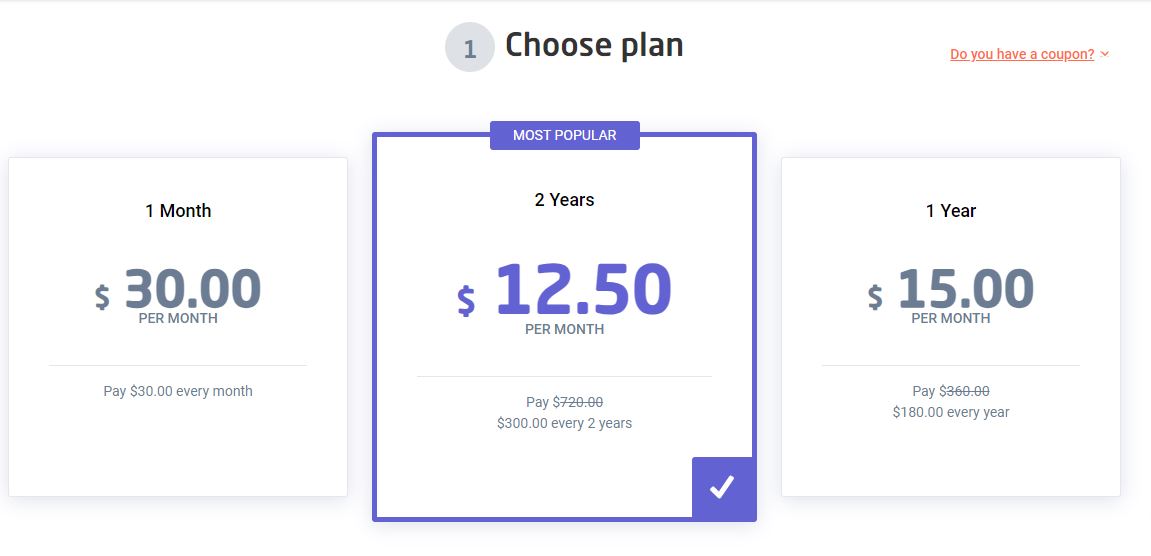
- Download the app to your operating system.
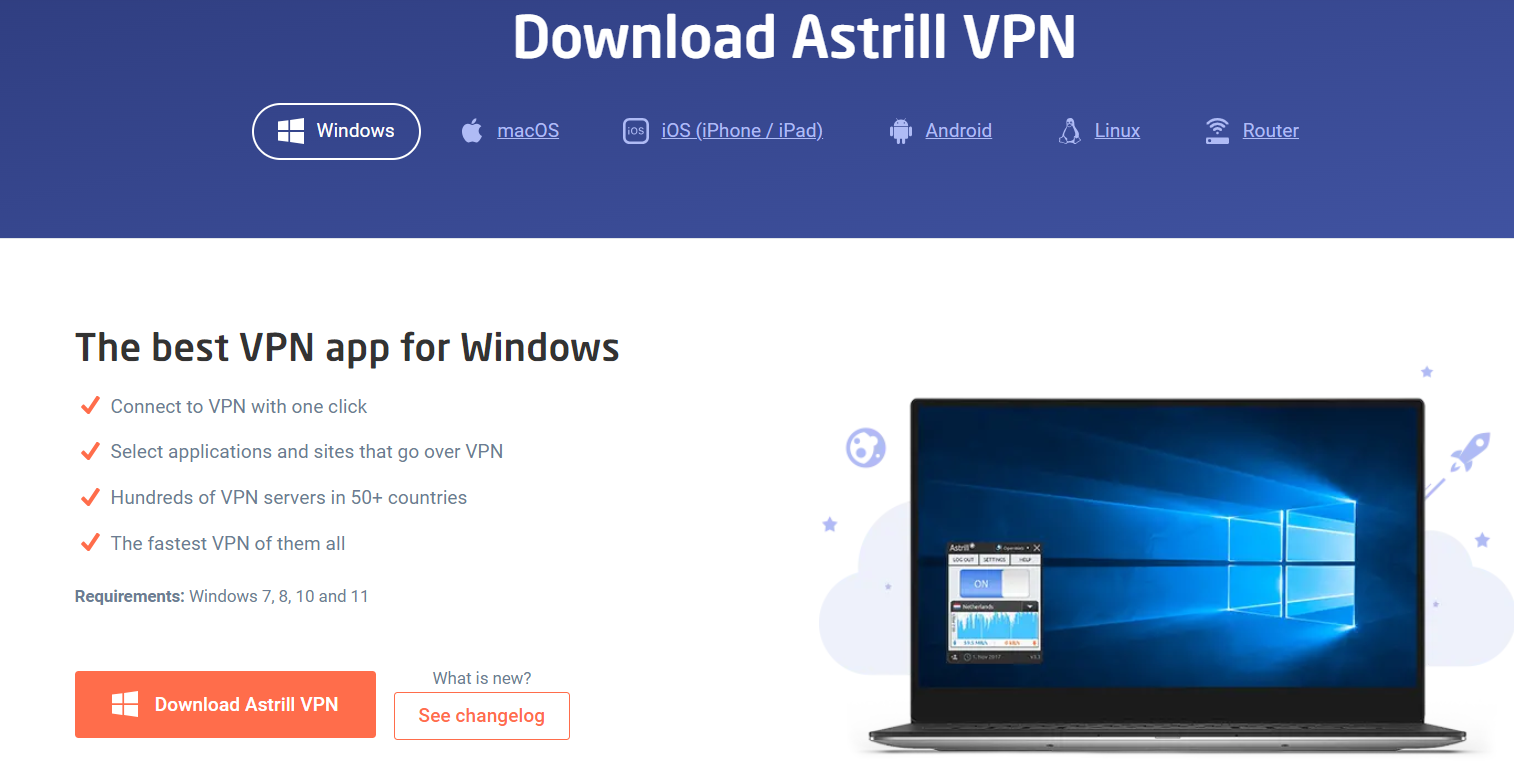
- Once you’ve registered and signed up, choose the server location of your choice.

- Turn on the VPN connection, and you’re all good to go.
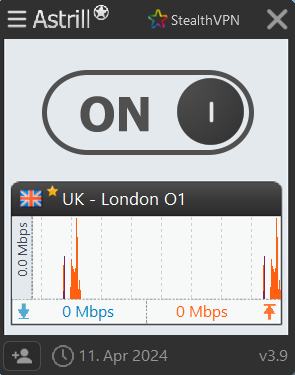
What To Do in Case You Become A Victim of a Shopping Scam
In case you become a victim of this shopping scam, there are various steps you can take, starting with reporting it to the authorities. You can start by reporting it to the Federal Trade Commission; they’ll take it from there. You can easily report the scam online by going to their website.
You should also immediately contact your bank and credit card company and ask them to dispute your charge. They could help you get your money back that you lost since you got scammed. You should also cancel the credit card that you used to pay.
Wrapping Up
When significant shopping events like Black Friday and Cyber Monday roll around, we’re all looking for the next big deal. In the excitement of finding the best deals, we may ignore the website we’re using, thinking it to be legitimate. However, it’s essential to pay attention and ensure that the website you’re using is legit. Otherwise, you could become a victim of identity theft and fraud.
This guide outlines the most common signs of a fake shopping website so that you can identify them early on and not fall prey to these scams. If you do fall victim to these scams, report them immediately. You can also report the fake website to the FBI and let them know why you think the website is fake by including details.
FAQs
You can check if a website is legitimate by observing the URL, whether the website has an SSL certificate if it has poor grammar and spelling, and checking reviews for the website to verify its legitimacy.
For example, a fake Adidas online store would have a domain name of adidas.com.cn instead of adidas.com. These are subtle signs to notice to detect whether the website is fake.
You can report a fake online store to the FBI (Federal Bureau of Investigation) or the FTC (Federal Trade Commission).


No comments were posted yet